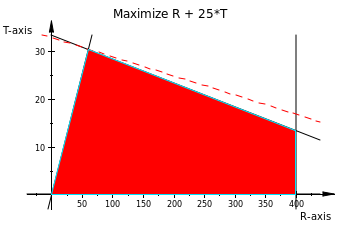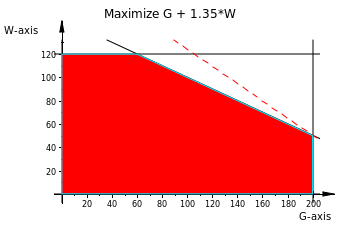Show & Sell can advertise its products on local radio and television (TV). The advertising budget is limited to $10,000 a month. Each minute of radio advertising costs $15 and each minute ofTY commercials $300. Show & Sell likes to advertise on radio at least twice as much as on TV. In the meantime, it is not practical to use more than 400 minutes of radio advertising a month. From past experience, advertising on TV is estimated to be 25 times as effective as on radio. Determine the optimum allocation of the budget to radio and TV advertising.
Decision variables
R: number of advertising minutes on radio per month
T: number of advertising minutes on TV per month
Objective function
Z: effectiveness of advertising that we need to maximize
Z = 25*T + R
Constraints
15*R + 300*T <= 10000
R >= 2*T
R >= 400
T <= 0
Using MuPad (Symbolic Math) in MATLAB:
k := [
{15*R + 300*T <= 10000,
R >= 2*T,
R <= 400,
T >= 0},
25*T + R,
NonNegative
]:
g := linopt::plot_data(k, [R, T]): plot(g):




